Shared Senses Research

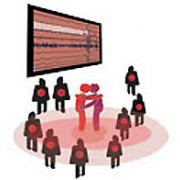
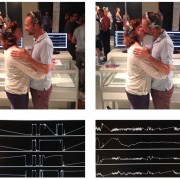
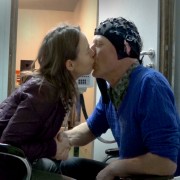
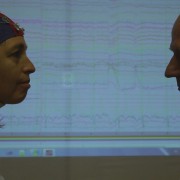
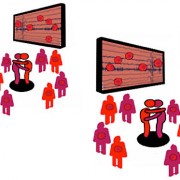
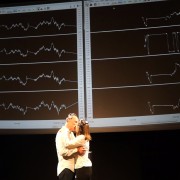
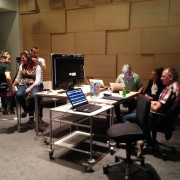
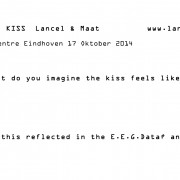
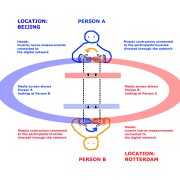
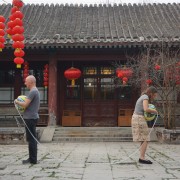
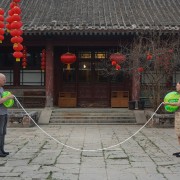
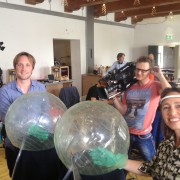
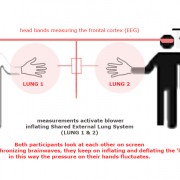
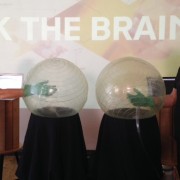
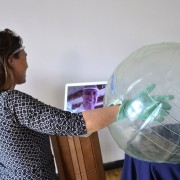
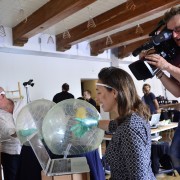
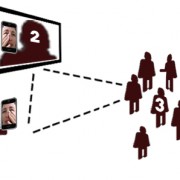
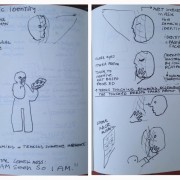
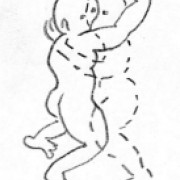
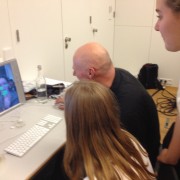
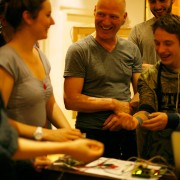
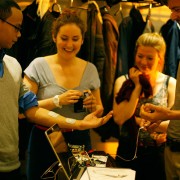
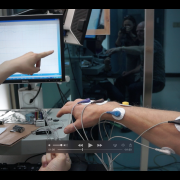
✹Team Shared Senses: 'Feeling each other on a distance'
✹Dutch television: 'Kennis van nu'
✹Waag Society: 'Hack the brain'
CAN I TOUCH YOU ONLINE?
Touch is fundamental for emotional well being.
But however Media extend our bodies in space and time,
they prevent us from touching.
✸ ONLINE HANDSHAKE?
The 'handshake' is a sensitive universal ritual for survival.
When we shake hands together we answer the questions:
‘Can I trust you now? Am I safe with you?’
We answer these questions in our handshakes by:
- holding hands, 2. seeing each other in the eye, and
- synchronize through sensing warmth, moving and pressure.
Trust is established when feeling mutual streaming reciprocity;
because: We trust our own handshake.
Our handshake as an online haptic experience.
The artists:
“Let’s see if we can create an online handshake experience, using all the elements and knowledge of the old ritual. Can we play around with the perception of a handshake? Can we disconnect our ‘holding hands’ and ‘sense of seeing’? And can we make use of our dynamic brain system and flexible body schemes - or even use our brainwaves to touch each other online? Let's deconstruct the handshake for a experimental embodied networked synthesis, and see if we can Share Senses,..."
✸ EXTERNAL LUNG SYSTEM?
For the online handshake the artists designed
an inflatable 'External Lung System', for:
1) Seeing each other on screen
2) Hand pressure
3) Synchronizing through 'pressure' and 'EEG brainwaves'
The networked 'External Lung System' is based on the physics principle of communicating vessels.
Participants synchronize their pressure and movement by streaming air,
‘like breathing together’.
Societal relevance: Touch is fundamental for emotional well being
Social scientists and philosophers state that touch, experience of embodied proximity and
face to face connection are core components for trust, engagement and reciprocity; which are in
turn the foundations of our social structures. Thus there is an urgent need for intuitive, haptic
interfaces for social mediated touch:
WE TRUST OUR OWN HANDSHAKE
✸ DIGITAL SYNESTHETIC KISS?
In E.E.G. KISS the artists investigate how a kiss can be translated into biofeedback data for an online kiss experience. In a poetic, shared ritual for online 'kissing', 'heartbeats' and 'EEG/ECG data', all participants feel, see, hear and experience a communal kiss.
Performance In performances and live kissing experiments with E.E.G. head sets to measure brainwaves, visitors are invited to participate as kissers, voyeurs and EEG data scanners. While kissing, their brainwaves are measured and visible as E.E.G. data. These data are then translated to a music score, connected to the heartbeat of audience around.
The artists deconstruct the kiss, E.E.G./ECG data and heartbeat from different participants, to reconstruct a new, digital synesthetic kissing body, through an audio-visual-haptic brain computer interface system: Synesthetic EEG Kiss and, in the near future, a Global Kiss-In.
✸ SAVING FACE - TOUCHING SOMEONE ABSENT?
Thanks to:
- Mondriaan Foundation
- Delft University for Technology 'Participatory systems initiative
(Dr. Caroline Nevejan, Prof. Frances Brazier) - TASML Tsinghua University Beijing artists in residency (Art, science and technology Laboratory, curator Zhang Ga)
- Faculty Neuro-engineering Tsinghua University Beijing (Prof Hong Bo)
- Waag Society for Old and New Media: 'Hack the brain' workshop,
(in collaboration with Anne Jan Brouwer and Robbert van 't Westende) - Institute for Provocation Beijing.